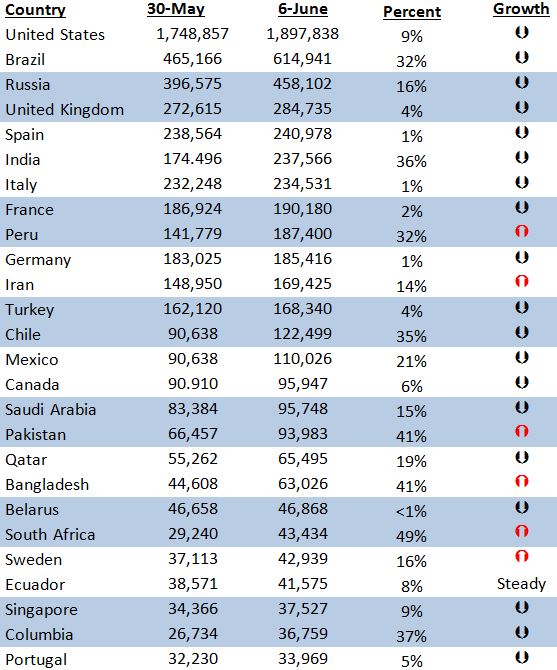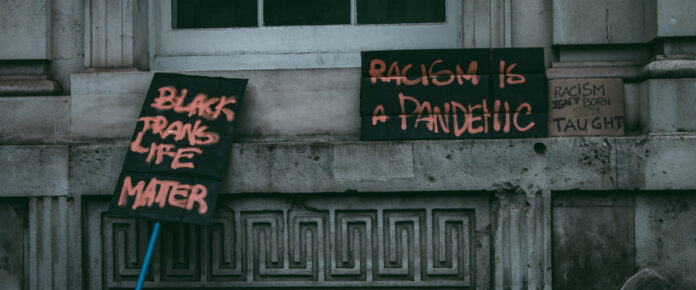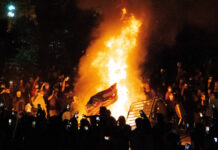Across the country, riots and looting have generally slowed or ceased altogether while peaceful protests not only continue but grow in size. The “defund the police” movement continues to find support, but while some politicians give it lip service, actions taken are largely symbolic.
What may happen is that individual officers will be less willing to engage in actual policing, resulting in more crime as criminals see a lack of consequences for their action. “Less willing to engage” means not rushing to the scene of a crime while it is ongoing, but showing up afterwards to take a report. It means not chasing a fleeing felon because they might crash. It means not trying too hard and ignoring low level crimes.
Politicians Tap Dance
While many local politicians try to tap dance between supporting protesters but not looters and supporting police without condoning police brutality, many are finding it impossible to please their constituents, which includes businesses that suffer during looting. There have been calls for the mayors of Minneapolis, New York, Seattle, Raleigh, N.C., and Joliet, Ill., to resign.
Voters need to realize two things: First, while sheriffs are elected, police chiefs are appointed. A police Chief is usually hired by the city in a decision made by the mayor and city manager that is usually approved by the city council. To change the police, you need to start with changing the mayor. The Chief of Police often has a five year contract and firing them before the contract expires will probably cost the city money.
The chief of police and his command staff, however, are responsible for setting policies and determining training. The command staff (usually the chief, deputy chiefs, assistant chiefs and/or colonels and majors, depending on the city) is responsible for ensuring that policies are followed and training is kept up to date.
Because they are elected, mayors often make political decisions, like deciding to let looters loot to “blow off some steam.” Police, on the other hand, are more likely to follow policy. If the policy says fire teargas and rubber bullets in given situation, then they are going to fire teargas and rubber bullets in that situation.
Police Training
The Minneapolis police have now barred choke holds, something most agencies have banned for years. I have an officer friend who said they are trained to put their knee on someone’s back while handcuffing but that putting your knee on a someone’s neck during the course of an arrest is banned and his agency hasn’t taught that technique for more than 35 years, if ever.
A recent opinion piece in the Wall Street Journal blamed police unions for keeping bad police officers on the job. I think this is probably spot on. The unions often make it difficult or impossible to fire an officer, even one who has a record of using too much force. Until this problem is resolved, a few bad officers are going to make all cops look bad. You’d think the union would be against that.
Unemployment Down
As cities and states reopen, the loss of jobs as not only ended but reversed. Friday’s unemployment report showed a gain of 2.5 million jobs instead of the loss many had expected. As more and more business reopen, jobs are expected to rebound.
In New York City, which is expected to start reopening on Monday, 885,000 jobs were lost in April, on top of those lost in March. Even if only half return were to work, that will help propel unemployment numbers down.
Coronavirus Data
There were 24,300 new cases of Coronavirus reported in the past 24 hours, bringing the total in the U.S. to 1,935,800. This is an increase of 1.3 percent. Deaths climbed 1,197 to 109,391, a 1.1 percent increase.
Globally, cases surged 166,000 to 6.927 million case, an increase of 2.45. As you can see in the data below, some countries continue to see a rapid growth in cases while others have successfully controlled their outbreaks.
Here are country results as of yesterday versus a week prior.

As the figures show, Brazil, Peru, Chile and other South American countries are growing while most of Europe continues to decline. India and Bangladesh also show high rates of growth while Russia appears to have locked down either its cases or its reporting.
India is likely to rockets past the UK in a few days to rank it as the country with the fourth most cases. Mumbai’s hospitals are at the bring, according to this article from the Wall Street Journal, “Worse Than a War Zone’: Covid-19 Batters India’s Mumbai City.” The article compares Mumbai’s current state to that of New York at its peak, demonstrating the problem with fighting COVID-19 in an area with a high population density.
Interestingly, Sweden, the country that avoided lockdowns and let the virus spread in search of heard immunity, now has one of the worst rates of growth in Western Europe. This has caused them to rethink their approach and also is an important bit of evidence that the stay home orders were effective in slowing the spread of COVID-19.
We apologize for the late posting and the errors in yesterday’s report, which have since been updated and corrected. We’ve been out of town.








